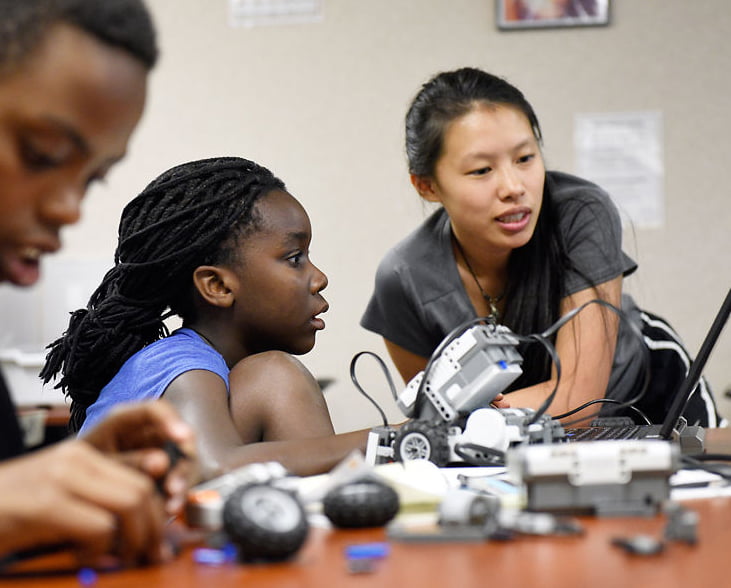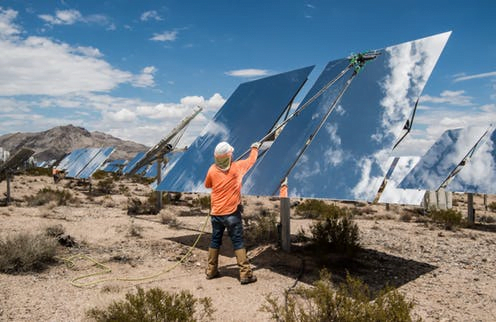Back to School … what does education mean to you?
Looking forward to another school year and considering that we are nearly two decades into delivering on the promise of 21st-century education, we offer five observations of education today. Exploring education’s promise, its reality, and its delivery model as we approach 2020.
Five Observations:
1) “Today’s student will enter a work environment that is increasingly complex and ever-changing.”
Disruptive changes in business models, coupled with technology’s impact on the workplace are having a tremendous impact on the expected employment landscape of the future. Today’s students will enter a future job market knowing that on average each of them will have more than 10 different jobs within their first twenty years of work. Of these positions, over half of them are not in existence today. “Learning how to learn”, coupled with a commitment to life-long learning may be the best preparation for today’s learners as they address this future.
2) “Individualized learning is for everyone”
 We learn in many ways, and for any single learning item there are innumerable ways to teach it. Our preferred learning styles dictate the learning modalities that make educational experiences effective and lasting for us. Great educators have a knack at finding those for each student, and great learning environments are the ones that enable educators and students to find and use those preferred styles. Whether it’s in providing augmented audio solutions for students, supporting great visual learning experiences, or through more hands-on and creative spaces supporting kinesthetic experiences there is a space shaped to support every student’s learning style. Learning opportunities found through the arts, through sport, through community service, and through STEAM experiences all serve as examples of learning opportunities that enrich the experience offered to our students. The bottom line; we all learn differently, and learning happens everywhere. Our communities, our campuses, and our facilities must reflect and support this reality.
We learn in many ways, and for any single learning item there are innumerable ways to teach it. Our preferred learning styles dictate the learning modalities that make educational experiences effective and lasting for us. Great educators have a knack at finding those for each student, and great learning environments are the ones that enable educators and students to find and use those preferred styles. Whether it’s in providing augmented audio solutions for students, supporting great visual learning experiences, or through more hands-on and creative spaces supporting kinesthetic experiences there is a space shaped to support every student’s learning style. Learning opportunities found through the arts, through sport, through community service, and through STEAM experiences all serve as examples of learning opportunities that enrich the experience offered to our students. The bottom line; we all learn differently, and learning happens everywhere. Our communities, our campuses, and our facilities must reflect and support this reality.
3) “This ain’t your father’s schoolhouse”
How many of our work environments are disrupted every 40 – 50 minutes by a loud bell or horn? How many of us, responding to this interruption would then move on to another task, in another location, disrupting our focus, our concentration, and our energy? Many educational facilities still hold to and are guided by educational models that served an industrial-focused society, but truly do not reflect the learning environment needed today. As we look to the future, we must re-shape our educational environments to better support and shape the development of the characteristics of collaboration, creativity, cooperation, communication, and critical thinking within our students.
4) “Social-emotional learning (SEL) – why it matters and how to foster it”
Social-emotional abilities serve as indicators of how well our students adjust to their environment, adapt to change, and ultimately find success in life. Decades of research suggest that skills such as self-management, social awareness, and responsible decision-making are skills that serve learners well in the short term and in the long term. Benefits of SEL range from improved classroom behavior, to reduced rates of being in public housing as an adult or spending time in a detention facility. Schools can take advantage of these benefits not only in implementing SEL, but also in creating safe, supportive environments. The development of these skill sets in combination with rigorous academics creates a high-quality learning environment that empowers students to be more effective contributors within their classrooms, their schools, and ultimately within their communities / future work environments.
5) “Preparing for a future on a rapidly changing planet”
 The physical world is changing dramatically. Climatic change, water shortages, rising sea elevations, and population migrations, are all examples of disruptive elements facing the world that our students will inherit. What skill sets can we impart today that will help them navigate the world that is presented to them? Imparting lessons of resource conservation, deeper understandings of ecosystems, and a general respect of the natural environment are important first steps in preparing our students. Knowledge and skills developed in areas of science, technology, engineering, and mathematics may serve as a useful ‘toolkit’ in preparing our students to manage and thrive in the world presented to them.
The physical world is changing dramatically. Climatic change, water shortages, rising sea elevations, and population migrations, are all examples of disruptive elements facing the world that our students will inherit. What skill sets can we impart today that will help them navigate the world that is presented to them? Imparting lessons of resource conservation, deeper understandings of ecosystems, and a general respect of the natural environment are important first steps in preparing our students. Knowledge and skills developed in areas of science, technology, engineering, and mathematics may serve as a useful ‘toolkit’ in preparing our students to manage and thrive in the world presented to them.
Conclusions
The education of our student learners is one of the greatest responsibilities of the communities in which we live. The future world and future workplace likely have us in a position of preparing our students for jobs that do not yet exist, employing technologies that have not yet been invented, to solve problems that we do not yet know exist. These five areas of focus give us some direction and insight as we prepare to undertake this tremendous responsibility of educating today’s students as parents, teachers, and communities.
Through our educational programming, planning, and design services, we are proud to be part of the facilities, campuses, and communities that we have served. We wish every educator and student the very best in the 2019 – 2020 school year.

